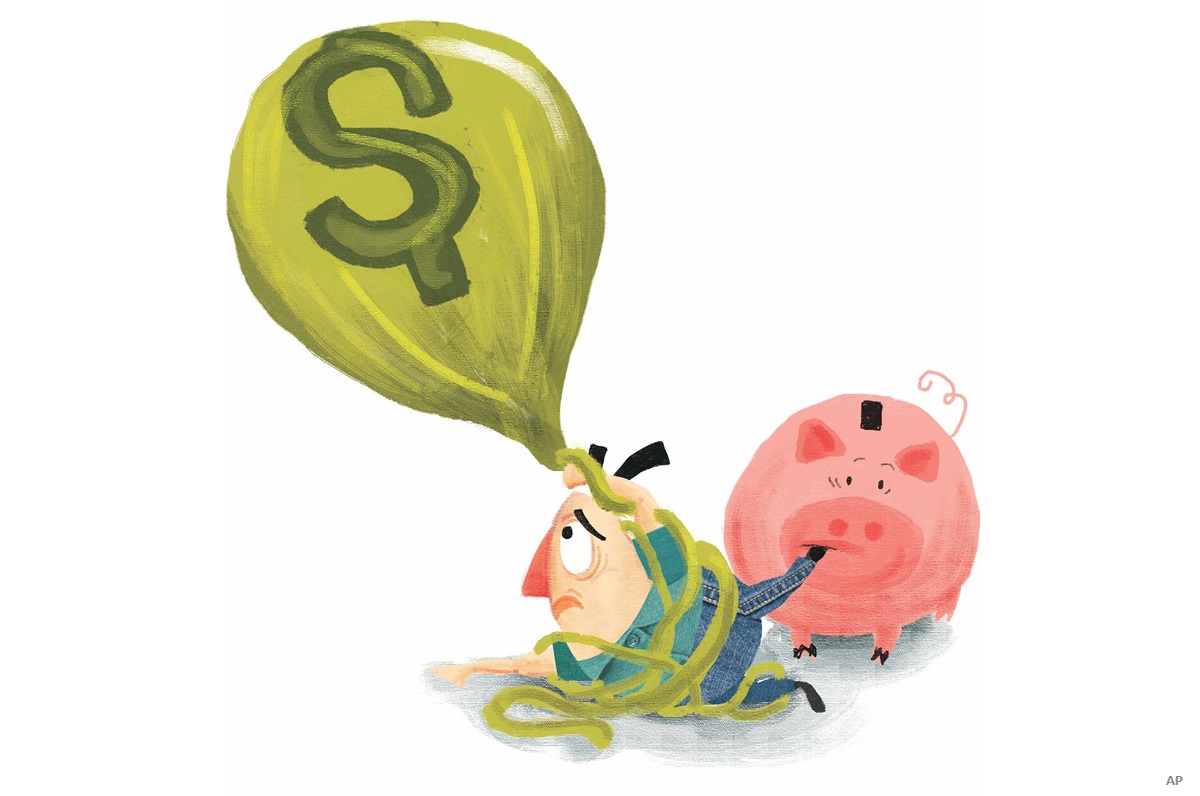
Given the uncertainty in equity markets, Gord O’Reilly, lead manager of the 4-star rated $103.2 million Steadyhand Equity, is being a little more cautious than usual. Besides running about 6% cash, O’Reilly and his team are positioned defensively and favoring holdings that are either negatively correlated with markets or have the strength and resilience to ride out a potential market decline.
Chief among O’Reilly’s concerns that the markets are vulnerable to a correction, is the slowdown in earnings. “Coming off President Trump’s tax cuts in 2018, where the S&P 500 earnings were up about 18% year-over-year, this year second quarter earnings are down about 2.7%, year-over-year. Earnings revisions for Q3 and Q4 are negative,” says O’Reilly, vice-president and senior portfolio manager at CGOV, a unit of Montreal-based Fiera Capital Corp. “Sixty percent of U.S. corporations that have reported have taken down guidance for the last two quarters. As fundamental investors we like to invest in companies where earnings are going up. The stock market is at all-time highs and earnings are going down—that’s of concern to me.”
Earnings down, debt up spells doubts
Another warning signal in O’Reilly’s view is that corporate debt leverage is at record highs, thanks to very low interest costs. “Gross world debt is about three times gross domestic product, but corporate leverage is about one times GDP. Historically that is quite high,” says O’Reilly, a 30-year industry veteran who helped found CGOV Asset Management in 1995 after nine years at Manulife Investment Management and earning a bachelor of commerce from Queen’s University in 1989. CGOV, which manages about $4 billion in equity assets, was acquired by Fiera in May 2018.
“Even at the U.S. government level, debt has compounded at about 7.5% since 2007. To me, it says we require more and more debt to get smaller and smaller amounts of GDP growth. Eventually, with that amount of debt there are only three ways you can reduce it: first, grow your way out of it, but with demographic trends it seems less than likely; second, you can engender deflation, which the Bank of Japan has tried for decades, and it hasn’t worked; and third, you can default on your debt, which I’m not saying will happen. We are in a bit of tough spot in terms of debt.”
The price needs to be right
A bottom-up investor who follows a growth-at-a-reasonable-price style, O’Reilly has managed the fund since its inception in Feb. 2007. Of note, he has raised cash to about 6% of the fund, after being fully invested last winter. “Who knows when the knife will drop, in terms of when the market decouples. We are trying to manage our defensiveness in ways other than cash. Being a long-only manager, one of my most surprising financial metrics that we look at internally is our ‘up-capture’ and ‘down-capture.’ Over the last decade, when the market goes down, the fund only goes down about 80% of the market. When the market goes up, we tend to go up about the same amount. We are trying to create an asymmetric return profile. That is, we try to participate on the up side, but try to protect ourselves on the downside.”
Year-to-date (as of July 30), Steadyhand Equity is up 13.24%, compared to 16.89% for the benchmark S&P/TSX Composite Index, and 14.34% for the Canadian Focused Equity category. On a five-year basis, however, the fund averaged 7.56%, versus 4.09% for the index and 4.4% for the category.
Running a concentrated portfolio of about 25 names, which has a high active share relative to the S&P/TSX Index, O’Reilly seeks companies that are growing steadily and have a wide economic moat. “We tend not to have a lot portfolio turnover and want to own a company for five to 10 years,” says O’Reilly. “We look for companies that have high returns on invested capital, low net debt, and the ability to generate free cash flow in almost any economic environment, which given my concerns is great. If you are generating free cash flow you can pay down debt, buy back stock and make acquisitions. If your peers are capital-constrained, that is a huge advantage.”
U.S. is ‘over-owned’
From a geographic viewpoint, about 50% of the portfolio is in Canadian companies, 26% in international or EAFE markets, and 17% in the U.S. Referring to the relatively low U.S. exposure, O’Reilly says: “Our fear is that the U.S. market is a bit over-owned in terms of global financial markets. Valuations, compared to the rest of the world, are close to all-time highs. And we are getting close to a period where the U.S. dollar may top-out. That would not be great for U.S. dollar assets.”
One of the larger holdings is Franco-Nevada Corp. (FNV), a Canadian royalty firm that collects royalty payments on gold, silver and other resource assets operated by other companies. Over 80% of its revenues come from precious metals, including gold, silver and platinum. “The big case against holding gold used to be is that it doesn’t pay a yield. But if you have US$13.5 trillion in assets that are negative yielding, to me the case [against gold] has gone away,” argues O’Reilly, adding that the stock is uncorrelated with the other holdings in the portfolio.
Moreover, looking back at November 2011, precious metals and minerals accounted for 15.8% of the S&P/TSX Composite Index. Today, it’s 5.2% of the index, a rock-bottom low. “The conditions that I see in the world suggest that gold will continue to do well. It’s under-owned as an asset class and a good hedge for a long-only equity portfolio,” says O’Reilly, who admits he is being contrarian.
All-terrain resiliency required
From a company perspective, Franco-Nevada has no debt and has increased its dividend every year since going public in 2007. In addition, its share price has compounded at about 20% since the IPO. “We like things that have asymmetric return profiles. If we do get a large market drawdown, Franco-Nevada will perform quite well, as it did in December 2018.”
Another favorite is Chicago Mercantile Exchange or CME Group Inc. (CME). “Fifty-two percent of their daily trading volume is linked to interest rate futures. With rates so low, they do well. But if there is any spike or dislocation in interest rates, they benefit,” says O’Reilly, adding that CME has a 52% operating margin and a return on invested capital in excess of 20%. “And they have a big commodity exposure as well. Because it’s largely a fixed-cost business, any increase in trading volume drops straight to the bottom line.”
In addition, O’Reilly likes Keyence Corp. (6861), a Japanese firm that manufactures sensors and so-called “machine vision” tools used for assembly lines. “They have 200,000 clients around the world,” says O’Reilly. “Their return on invested capital, according to analysts at Sanford C. Bernstein, is in excess of 100%. They have a lot of cash on the balance sheet, which is very attractive to us. And in the first quarter, they increased their dividend by 100%.”






















